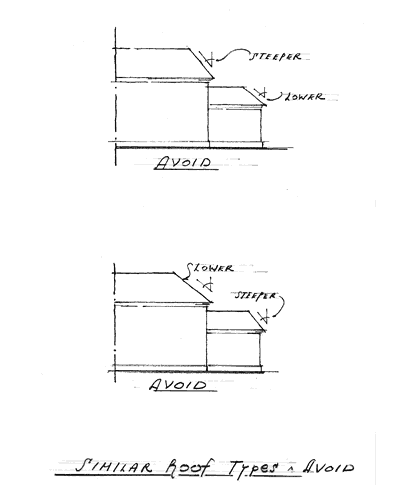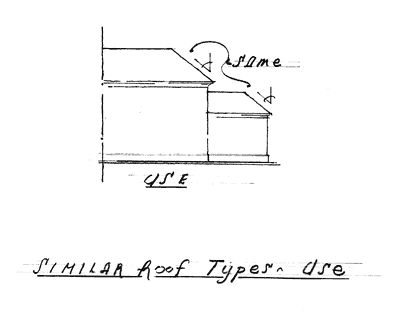
FALL 2004
Details: Combining Roof Types
Different types of roof have different slopes within
the same building Many traditional buildings incorporate different types
of roof within a single composition. For example, a building with the
primary mass under a hip may have a central projecting bay with a gable
end and a front portico with a pediment. Don't use the same pitch for
each roof! Each type has its own characteristics and should have different
slopes:
The hip roof should have the steepest slope of all of the types. Because
of its nature, this type of roof is never seen in true elevation and will
always appear lower than it actually is.
Unlike a hip roof, the gable is seen in true elevation and its actual
height is visible. Set the pitch lower to accommodate for this. For a
formal classical pedimented gable, a good pitch would be 26.5°.
The pediment has the lowest slope of the three types. It is a formal motif
relating to the Orders. The most common pitch is or 22.5° (1/5), but
as pediments get wider or narrower the pitch increases or decreases slightly
(typically, from 21° to 26.5°).
By contrast, where you are using similar types of roof -- a large hipped
roof at the main building, with smaller hipped wings or gable porch on
the gable end of a house, for example -- the roof pitch should be common
throughout. The overall structure will be unified and each part will tie
in with the next.
|
|

